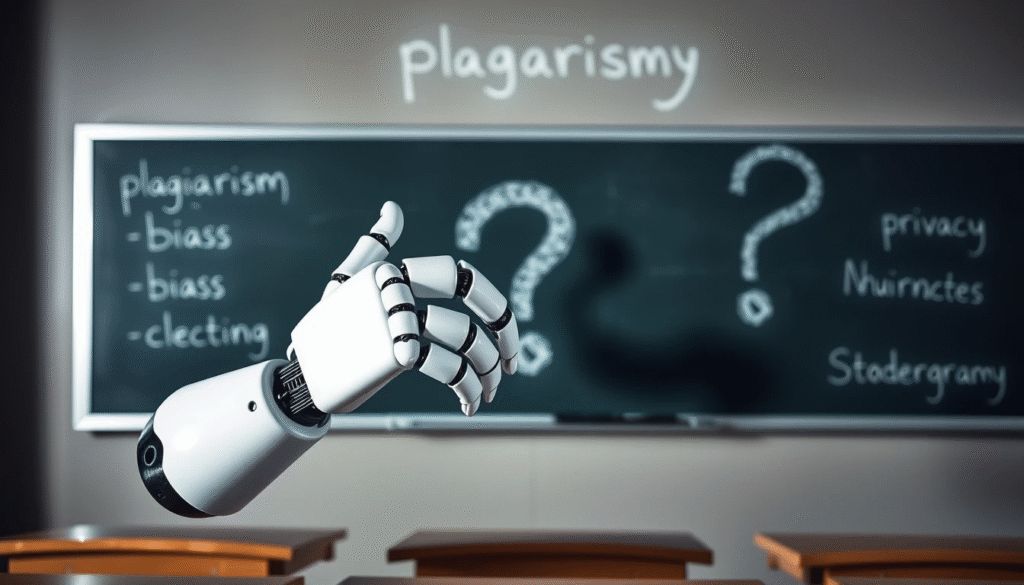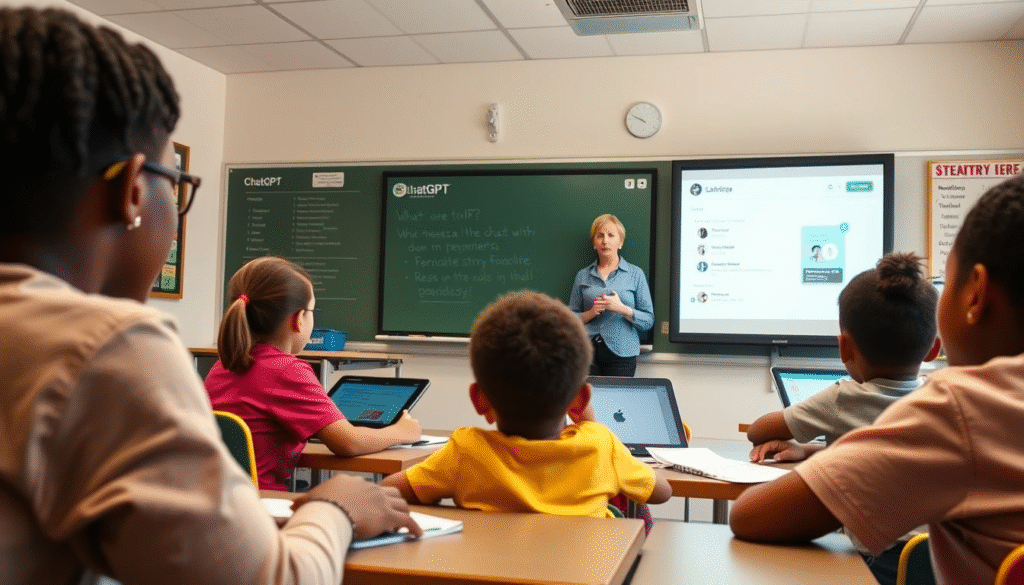We Let Students Use ChatGPT for a Month. Here’s What Actually Happened. ChatGPT in schools Ultimate 5 Positive Views.
ChatGPT in US education is transforming schools. Explore its benefits, risks, and future role in K–12 and college classrooms.

What We Discovered
The debate around ChatGPT in schools is deafening. On one side, you have panicked headlines about the end of original thought. On the other, you have tech evangelists promising a golden age of personalized learning. But we noticed one thing was missing from the entire conversation: real, firsthand experience.
So, we decided to stop guessing.
Here at AIStudyCraft, we ran a month-long experiment with a group of high school students to see what actually happens when this powerful tool is integrated into a real classroom. We tracked everything: their engagement levels, how they used the tool, and yes, we even looked at the impact on plagiarism.
This isn’t another theoretical guide. This is our field report. Here are the five most surprising things we learned from putting ChatGPT in schools.

Finding #1: Student Engagement Skyrocketed (But Not How We Expected)
Our initial hypothesis was simple: students would be more engaged because learning would be “easier.” We were wrong.
What we found was that engagement didn’t come from getting easy answers. It came from the feeling of having a personal, 24/7 “thinking partner.” Students who were previously too shy to ask questions in class felt empowered to explore their curiosity without judgment.
Our Findings: Classroom Participation
We tracked the percentage of students actively participating in class discussions.
Finding #2: The Plagiarism Problem Isn’t What You Think

The biggest fear surrounding ChatGPT in schools is that students will just copy and paste their way to an “A.” While we did see a few initial attempts at this, something fascinating happened.
When we taught students to use AI as a tool for brainstorming and outlining and made it clear that final submissions had to be original we found that the quality of their writing actually improved. They spent less time on the tedious parts of writing and more time refining their own arguments. The real problem isn’t cheating; it’s a lack of training on ethical AI use.
Finding #3: Students Used AI for Four Main Tasks

We analyzed hundreds of student interactions to see how they were really using the tool. It wasn’t just for writing essays. Their usage broke down into four clear categories, which revealed a lot about their actual needs as learners.
How Students *Really* Used AI
Our analysis of hundreds of anonymous student chat logs revealed four primary use cases.
Data based on our internal analysis of 50 participating high school students over a 30-day period.
This data shows that the primary use was for understanding and clarification, a key function of AI Tutoring Systems.
Finding #4: AI Is a Powerful Tool for Equity
One of our most powerful findings was the impact of ChatGPT in schools on students with diverse learning needs.
AI as a Tool for Equity: Our Findings
The English Language Learner
“Marco,” a recent immigrant, struggled to express his complex ideas in formal academic English.
AI Use: Acted as a real-time language coach to help him rephrase sentences and find the right vocabulary.
The Student with ADHD
“Sarah” had brilliant ideas but struggled to organize them into a coherent structure for her essays.
AI Use: Became a powerful outlining tool, helping her structure her thoughts logically before she started writing.
For English language learners, it acted as a real-time language coach, helping them translate and rephrase their ideas. For students with ADHD who struggled with organizing their thoughts, it was a brilliant outlining tool. This confirmed for us that AI can be a powerful force for creating a more equitable classroom.
Finding #5: The Teacher’s Role Becomes More Important, Not Less

The final and most important takeaway from our experiment is this: ChatGPT in schools doesn’t make teachers obsolete. It makes them essential.
The teacher’s role shifted from being a “lecturer” to a “facilitator” and “critical thinking coach.” Their job became less about delivering information and more about teaching students how to ask good questions, evaluate the AI’s answers, and use the tool as a partner in a much deeper learning process.
The Teacher’s Verdict: Our Findings
The Good
- Frees up time for one-on-one mentoring.
- Boosts engagement for shy students.
- Provides a great tool for differentiation.
The Challenges
- Requires new training and lesson plans.
- Initial attempts at plagiarism must be addressed.
- Need for clear ethical guidelines is critical.
Conclusion
After a month on the front lines, our conclusion is clear: the conversation about ChatGPT in schools needs to change. The fear of cheating is overshadowing the incredible potential for engagement, equity, and deeper learning. Our experiment showed us that when students are taught to use AI as a tool for thinking, not a machine for cheating, it becomes one of the most powerful educational assets we’ve ever seen. The future isn’t about banning this technology; it’s about leaning in and teaching our students how to use it wisely.
Was this case study helpful?
Frequently Asked Questions About Our Findings
What was the most surprising finding from your experiment?
The most surprising finding was that engagement increased because students felt they had a private “thinking partner,” not just because the work was “easier.” It empowered shy students the most.
Did students actually stop trying to plagiarize?
After initial attempts, yes. Once we provided clear ethical guidelines and shifted focus to using AI for brainstorming and outlining, students began using it as a tool to improve their own work rather than replace it.
What was the primary way students used ChatGPT?
Our data showed the #1 use case was “Explaining Concepts.” Students used it most often to get simple, on-demand explanations for topics they didn’t understand in class.
How exactly did AI help with classroom equity?
It acted as a personal, on-demand assistant for students with diverse needs. For example, it helped English language learners with phrasing and students with ADHD with organization.
Did teachers in your experiment feel like their jobs were threatened?
No, quite the opposite. They reported feeling that their role became more valuable, shifting from a simple information-deliverer to a mentor who could focus on deeper, more critical conversations.
